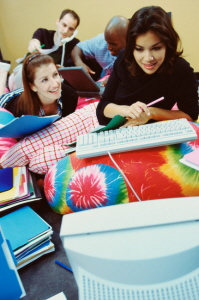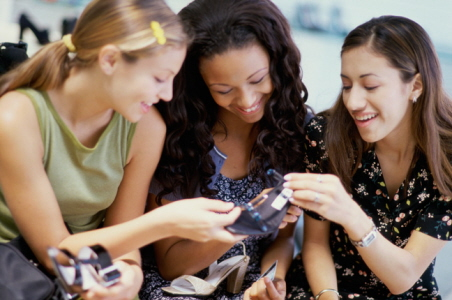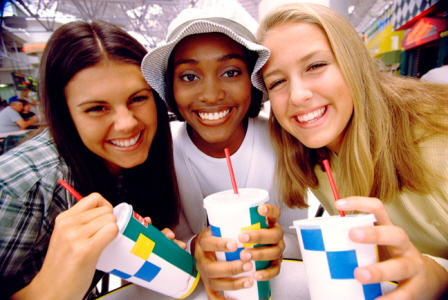TAfter telling your personal story, you can start to build a GATHERING (gather meaning to collect, to assemble, to reap), an integration of the pieces of your true self. Consider-- the different kinds of people, places, events--the things in your immediate environment and outside it, that help make you who you really are. Maybe your favorite color is pink, or is it shocking pink? Maybe your favorite book is Jane Austen’s “Sense and Sensibility,” or Stieg Larsson’s “The Girl with the Dragon Tattoo.” Life is about options, and the sooner we pick the particulars, the better we can start feeling about ourselves.
TThe Pick-up Place:
• Personality Type
• Family/ Relationships
• Color palettes
• Authors/ Poets
• Activities
• Clothing/ Accessories
• Music/ Dance
• Travel/ Food
• Spirituality
• Senior Living
This is par
Much of who we are now, depends on age and experience. What Rosanna (or Akesha or Joanne) was as a high school senior, is different from what she is now at 50, divorced, retired or tired, and wanting change. Change is possible. You are who you choose to be now and in the future. Always remember the loving God, with a heart like ours, who has the power to move us to where we were before, or to where we've never been! Harness that power and start making decisions that will get you there now!
.
A healthy self-awareness is the key to finding your true self, and to eventually creating and maintaining strong, loving relationships. Our primary goal in this section, therefore, is SELF-EXAMINATION
Personality Type
Family System
Color Palette
What is my personality type and how does it affect my interactions with others?
What is my family like, and how would I describe my role within my family?
What does color mean to me and what are my favorite color combinations?
There are several ways of finding your personality type:
The Myers-Briggs Type Indicator (MBTI) assessment is a psychometric questionnaire designed to measure psychological preferences in how people perceive the world and make decisions. These preferences were extrapolated from the theories proposed by Carl Gustav Jung and first published in his 1921 book Psychological Types (English edition, 1923). Jung theorized that there are four principal psychological functions by which we experience the world: sensation, intuition, feeling, and thinking. One of these four functions is dominant most of the time. Jung also proposed the existence of two dichotomous pairs of cognitive functions:
The 16 types are typically referred to by an abbreviation of four letters—the initial letters of each of their four type preferences (except in the case of intuition, which uses the abbreviation N to distinguish it from Introversion). For instance:
• ESTJ: extraversion (E), sensing (S), thinking (T), judgment (J)
• INFP: introversion (I), intuition (N), feeling (F), perception (P)
And so on for all 16 possible type combinations. * (from WIkipedia, the free encyclopedia)
raph text. Double click here to edit and add your own text.
T The Personality Type Kit
Collect all 16 cards representing the personality types, and have fun with your friends as you try to decide which one you are! You could also be a combination of several types, so take your pick! (Our online store is open.)
 Responsible Rita (ISTJ)
Responsible Rita (ISTJ)
Prefers a quiet, peaceful existence. Staid, almost contemplative in nature, but very dependable, taking responsibilities seriously and completely; very focused and given to traditional conventions; systematic, diligent, task-oriented, and goal oriented.
 Artistic Amelia (ISFP)
Artistic Amelia (ISFP)
Appreciates beauty in nature and art forms; original, creative, artistic; sensitive individual who dislikes rules, and would rather do things in her own way; usually an animal lover, respectful of the environment and her place in it; focused on the present moment.

Nurturing Nancy (ISFJ)
Calm, considerate, scrupulously honest; kind and caring, aware of other people's needs; dependable, stable, tradition-oriented toward practical solutions; highly perceptive, well-developed observational and analytical skills around people; feeling oriented and helpful towards others.
t.

Idealistic Irma (INFP)
Cause oriented, idealistic, focused on serving others; loyal to her beliefs, helpful, adaptable, generally unaware of details; aware of personal feelings but usually unable to verbailze them; makes a good writer with high standards tending toward

Intensive Irene (INFJ)
Highly intuitive and internally perceptual, creative, original, sensitive, and often stubborn about deeply held values; relies on her instincts about self and others; a deeply complex individual willing to sacrifice and persevere in what she thinks is the right thing to do; protective of self and others perceived as friends and loved ones.
 Thinking Thelma (INTP)
Thinking Thelma (INTP)
Focused on theoretical knowledge, highly intelligent, original thinker; easily grasps complicated concepts and favors logical explanations; works well independently; gives little value to subjectivity and personal feelings; may not be emotionally available to others.

Adventurous Anna (ISTP)
Logical, technical, mechanical,
uncomplicated, and practical; likes to take risks and craves adventure; performs well physically and is outstanding in sports; basically detached, she is less concerned with personal feelings or the feelings of others; good team player.

Fast-paced Frieda (ESTP)
Outgoing, friendly, enthusiastic action-oriented person; operates in the present moment, takes risks, and generates immediate results; not given to theory or study, but eager to get things done and move on; leads a very fast-pace existence, and makes a good salesperson.

Talented Tanya (ENFP)
Usually very skilled at a lot of
things; excited about new experiences, and exciting to be with; gets along with just about anyone, enthusiastic about projects but unconcerned with details; has many interests that she shares with people in many walks of life; admired for her many abilities; may have problems being centered due to her broad perspectives.
t.
 Intellectual Ina (INTP)
Intellectual Ina (INTP)
Has lofty ideals and intellectual zeal for knowledge; makes good use of her abilities and resources; assertive and ambitious, loves to debate issues but usually neglects the more mundane aspects of life; logical, perceptive, and quick, can be very successful at what she does provided she also develops her feeling side and awareness of others.
re to edit and add your own text.
 Citizen Cecilia (ESTJ)
Citizen Cecilia (ESTJ)
A take-charge, systematic, practical, loyal person; has literal, concrete perspective, and is law abiding to an extreme sometimes; organized and hard working, usually taking leadership roles in the community; has tendency to be too rigid and has little patience with those outside their value systems.

Empathetic Esther (ESFJ)
Gentle, generous, and giving; genuinely likes people, is willing to subvert her own interests for those of others; takes the caring of others as a serious responsibility; sensitive to others, sometimes needs their approval to feel good about herself; adheres to traditions and wants others to do the same.

Giving Gloria (ENFJ)
Likes to be around people and genuinely cares about their opinions and feelings; has extraordinary people skills; avoids being alone and fills her life with activities; sincere and personable in her relationships, seeks to help others sometimes to her own detriment; bright, sociable, enjoys being the center of attention; has a very giving quality.

Executive Emma (ENTJ)
Smart and decisive, outstanding
leadership qualities; focused on career advancement, is a long range planner; problem solver, successful in the corporate world; sometimes harsh and impatient with mistakes, intelligent, assertive, capable, can be intimidating and dominant; seeks personal power and usually achieves it.

Fun-loving Francie (ESFP)
Frolicsome, positive,
enjoyment focused, people person; craves new experiences and
getting the most out of life; loves to perform,and has well-developed people skills; warm, kind, and generous, genuinely helpful and spontaneous; upbeat, life-of-the party type, but has problems with negative experiences and will try to avoid or ignore them.
 Scientific Sally (INTJ)
Scientific Sally (INTJ)
Intelligent, independent thinker with a well developed theoretical knowledge base; easily understands complex concepts and can translate ideas into action; has a competent, original, analytical mind; maintains high standards for herself and expects it of others; has good leadership qualities.
It's certainly no secret that color plays an important role in all our lives. Somehow, it seems to be the secret to looking good (color in fashion), working well (color of our environment), and even feeling good (perception of color). So, continue your gathering of information about yourself by measuring your color sense against the information in this section. A detailed, "colorful" discussion of color symbolism is found at: www.desktoppublishing.about.com/cs/color/a/symbol . We have summarized the details given there, and added our own insights in preparing the following set of tables to help you understand colors, make informed choices about what makes you who you are, and realize how different colors "color" your own relationships.
There’s a great article (Fashion Tips: Express Yourself with Colors,) www.chiff.com/a/fashion-colors.htm by Rick Valens) for those of you who are just dying to use color to "make yourself known." Use Rick's tips as well as the color significance in the tables above, to plan a whole new wardrobe, to update an old one, or to fashion a new YOU! Here's the first paragraph of that really useful article on color:
"Feeling troubled over what color to wear? What color makes you look good? Well, fashion is all about yourself. What you choose to wear every morning tells a lot about you and how you felt that day. Even your little handbag carries a little story. Mixing and matching is a personal choice, you create your very own style!"
Have fun with the mixing and matching, gals! And to add to your color tool bag, remember that fashion trick made popular some twenty years ago, called "seasonal color analysis?" Well, guess what, it's still as relevant today as it was then. Go to "How to Find Your Perfect Color" at www.collegefashion.net/fashion-tips and take the quick quiz to find out if you're a summer, winter, autumn, or spring.
According to the article's author, Zephyr, " color analysis is basically " all about your natural coloring (hair, skin, and eyes), and how that combo compliments or contrasts with the things you choose to wear (make-up colors, clothing, or even jewelry). In fact, there are color palettes for every season, and even sub-palettes for every palette! Get started now, so you can begin to color yourself beautiful!
 Now, let's step back for a minute and see what we have so far. You've told your own story, picked your personality type, reviewed your relationships, your family system, and your role within the family. Maybe you've resolved some conflicts with our no-lose method. Maybe you've walked around our Gallery and picked a few pictures, sent some positive messages to friends from our Winning Words, and got some great sticker quotes for your desk. Now, you've picked your color season and your own color palette. What can you do with all this information you've gathered so far?
Now, let's step back for a minute and see what we have so far. You've told your own story, picked your personality type, reviewed your relationships, your family system, and your role within the family. Maybe you've resolved some conflicts with our no-lose method. Maybe you've walked around our Gallery and picked a few pictures, sent some positive messages to friends from our Winning Words, and got some great sticker quotes for your desk. Now, you've picked your color season and your own color palette. What can you do with all this information you've gathered so far?
You can design your own personal palette! Include not just your color choices, but your whole personality. Don't worry, as you continue your journey of self discovery, you'll have many more chances to re-do your personal palette. Ok, let's practice now. See the example below:
Vilma's Story: Vilma is a 42-year old single mom with twin teen-age boys. One of the boys is autistic and has recently had to be institutionalized. Their Dad is a dead-beat and mom supports her family by working two jobs, one as an accountant for a car dealership, days, and nights at home working for private clients online. That's her story.
This is Vilma's Personality Type: She's an ISFJ (see personality types above), a "Nurturing Nancy," calm, considerate, scrupulously honest; kind and caring, aware of other people's needs; dependable, stable, tradition-oriented toward practical solutions; highly perceptive, well-developed observational and analytical skills around people; feels oriented and helpful towards others.
Vilma's Color Choices: beige, brown, ivory, purple, and a little yellow (from matching her qualities with the color table above.)
Vilma's seasonal color: autumn
Vilma's wardrobe palette: (See below) from www.pinterest.com